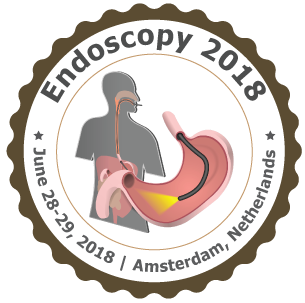12th International Conference on Abdominal Imaging and Endoscopy
Amsterdam, Netherlands

Jonathan Agustin R. Castro
Cardinal Santos Medical Center, Philippines
Title: Prevalence of Hepatic Fibrosis using Shearwave Elastography among Filipino Patients Sonographically Assessed with Fatty Liver Disease
Biography
Biography: Jonathan Agustin R. Castro
Abstract
BACKGROUND: Fatty liver disease is the most common finding in abdominal ultrasound examinations, wherein a relevant percentage may develop liver cirrhosis. This study reveals the prevalence of hepatic fibrosis on patients who with fatty liver disease and takes into account the association of both factors.
METHODS: All shearwave ultrasound results from February 1, 2016 to January 31, 2018 were reviewed. Therese reviewed for presence of findings of fatty liver disease. The total patients with and without fatty liver disease and hepatic fibrosis were tabulated. Mean Shearwave values were recorded and classified according to the degree of fibrosis.
RESULTS: Of the 208 patients having fatty liver disease, a total of 142 (68.3%) patients had evidence of fibrosis. Only 66 (31.7%) patients had normal results. 126 (88.7%) of the patients with fibrosis had were classified mild, 12 (9.2%) of them were moderate and 3 (2.1) were severe. 23 (16.2%) were within 20-39 years, 67 (47.2%) were between 40-59 years, 47 (33.10%) between 60-79 years and 5 (3.5%) were >80 years. 77 patients (54.2%) were male and 65 (45.8%) were female. Age and gender were tested for correlation to hepatic fibrosis using a CI=95% which revealed a p-value of < 0.98 for age and < 0.93 for gender; both were not significant. The prevalence of fibrosis in patients with hepatic steatosis was tested for significance with a CI=95% revealing a p-value of <0.0001, which was significant. Association between steatosis and fibrosis was also tested using a CI=95% showing a p-value of <0.0001, which was significant.
CONCLUSION: This study reveals that the prevalence of hepatic fibrosis on patients with fatty liver disease is statistically significant. A significant association between fatty liver disease and hepatic fibrosis has been proven in this study. There is however no gender or age range predisposition for hepatic fibrosis.

